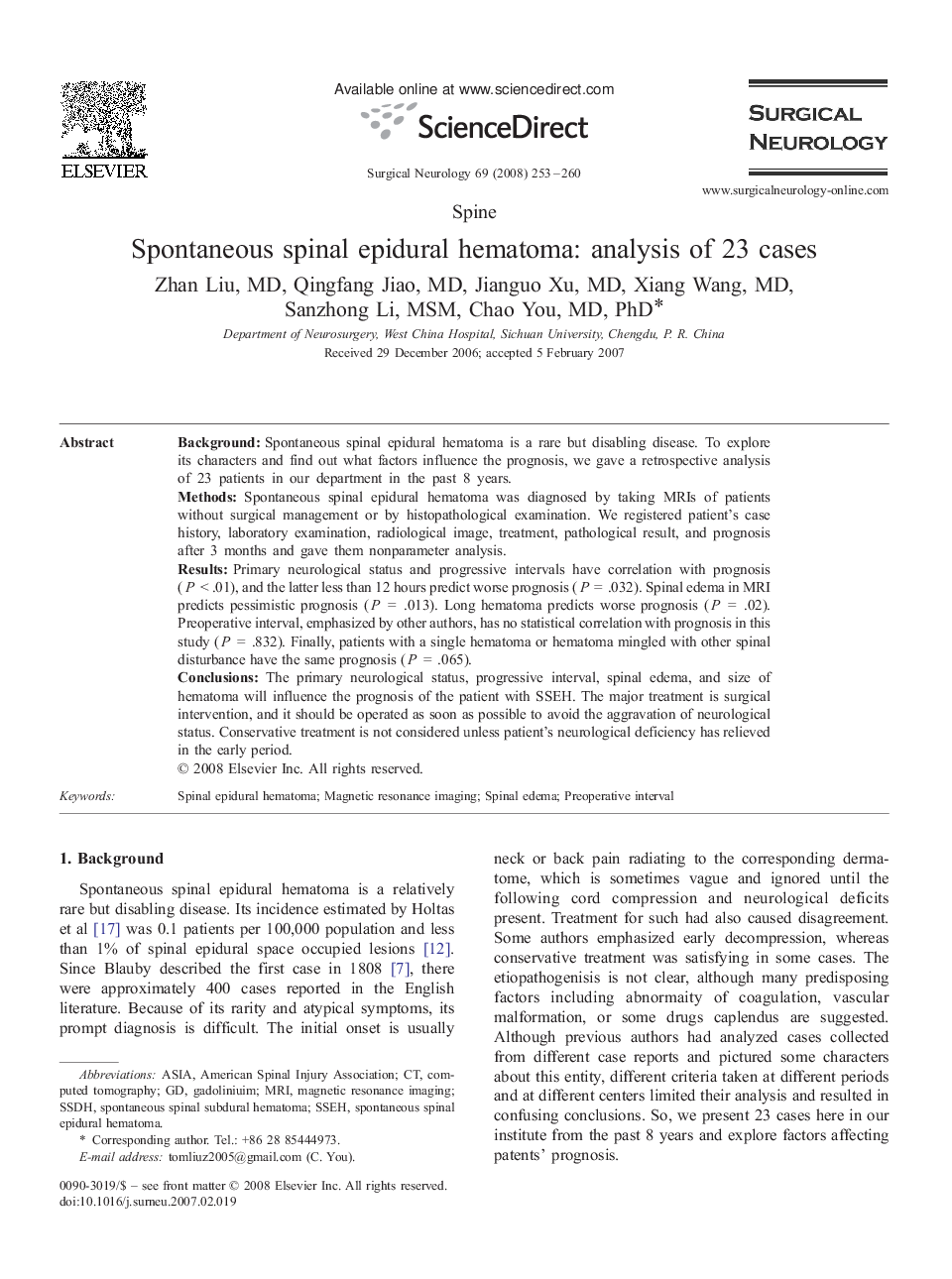| Article ID | Journal | Published Year | Pages | File Type |
|---|---|---|---|---|
| 3093177 | Surgical Neurology | 2008 | 8 Pages |
BackgroundSpontaneous spinal epidural hematoma is a rare but disabling disease. To explore its characters and find out what factors influence the prognosis, we gave a retrospective analysis of 23 patients in our department in the past 8 years.MethodsSpontaneous spinal epidural hematoma was diagnosed by taking MRIs of patients without surgical management or by histopathological examination. We registered patient's case history, laboratory examination, radiological image, treatment, pathological result, and prognosis after 3 months and gave them nonparameter analysis.ResultsPrimary neurological status and progressive intervals have correlation with prognosis (P < .01), and the latter less than 12 hours predict worse prognosis (P = .032). Spinal edema in MRI predicts pessimistic prognosis (P = .013). Long hematoma predicts worse prognosis (P = .02). Preoperative interval, emphasized by other authors, has no statistical correlation with prognosis in this study (P = .832). Finally, patients with a single hematoma or hematoma mingled with other spinal disturbance have the same prognosis (P = .065).ConclusionsThe primary neurological status, progressive interval, spinal edema, and size of hematoma will influence the prognosis of the patient with SSEH. The major treatment is surgical intervention, and it should be operated as soon as possible to avoid the aggravation of neurological status. Conservative treatment is not considered unless patient's neurological deficiency has relieved in the early period.
